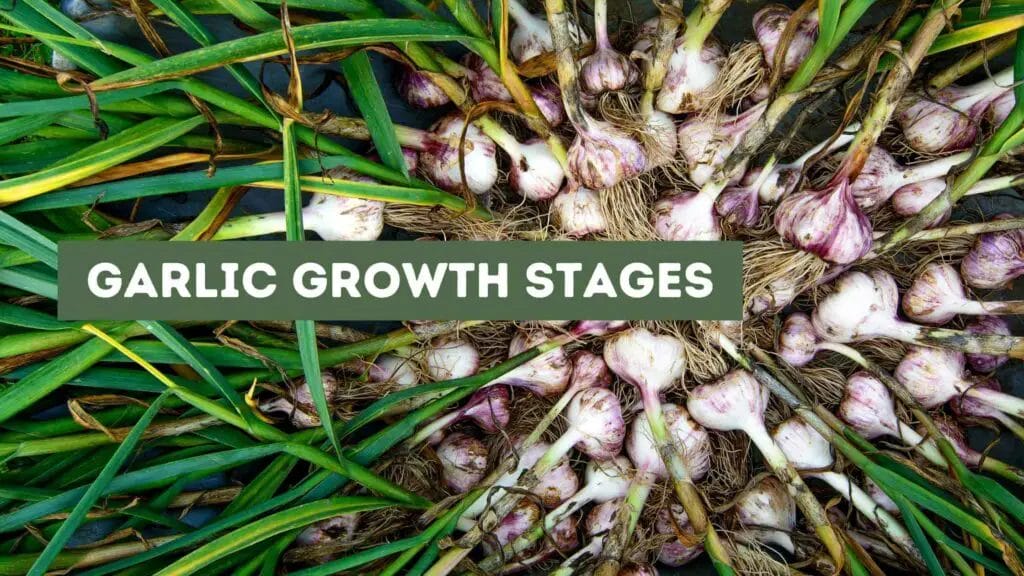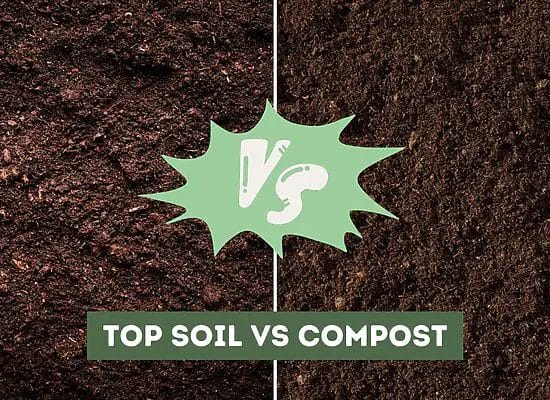
Growing garlic can be a rewarding experience, as it is a versatile crop that can be used in a variety of dishes and has numerous health benefits. However, it is essential to understand the different garlic growth stages in order to grow garlic successfully. These stages include germination, vegetative growth, bulbing, and maturation.
Key takeaways:
- Garlic Growth Stages: Garlic goes through four main growth stages: germination, vegetative growth, bulbing, and maturation. Understanding these stages is crucial for successful garlic cultivation.
- Germination Stage: During this stage, garlic cloves sprout roots and shoots. It takes about 7-10 days for germination to occur, influenced by soil temperature and moisture levels.
- Vegetative Growth Stage: After germination, the garlic plant develops leaves and stems. This stage lasts 4-6 weeks and requires adequate water and nutrients for proper growth.
- Bulb Formation Stage: The critical stage where energy shifts towards bulb formation. Leaves and stems stop growing, and the plant’s focus is on developing the bulb. It lasts 3-4 months and requires sufficient water and nutrients.
- Mature Bulb Stage: This final stage occurs when the garlic bulbs are fully grown and ready for harvest. The leaves turn yellow and dry, taking about 8-9 months to reach maturity.
- Garlic Varieties: There are various garlic varieties, including Hardneck Garlic, Softneck Garlic, and Elephant Garlic. Each has distinct characteristics, flavors, and uses. Understanding these varieties helps in selecting the right one for your preferences.
- Garlic Care and Maintenance: Proper care includes watering, feeding, weeding, mulching, and pest/disease management. Adequate watering, nitrogen-rich fertilizers, regular weeding, mulching, and controlling pests and diseases are essential for a successful garlic harvest.
Understanding Garlic Varieties
When it comes to garlic, there are various varieties to choose from, each with its unique characteristics. Understanding the different garlic varieties can help you choose the best one for your needs. In this section, we will explore three of the most common garlic varieties: Hardneck Garlic, Softneck Garlic, and Elephant Garlic.
Hardneck Garlic
Hardneck garlic is a type of garlic that produces a hard stem in the center of the bulb. This garlic variety is usually grown in cooler climates and is known for its complex flavor and easy-to-peel cloves. Hardneck garlic has a shorter shelf life than its softneck counterpart, typically lasting around six months.
Some common types of hardneck garlic include:
- Rocambole: This variety has a rich, full flavor and is known for its easy-to-peel cloves.
- Porcelain: Porcelain garlic has a mild flavor and is often used in cooking.
- Purple Stripe: This variety has a strong flavor and is known for its beautiful purple stripes on the bulb.
Softneck Garlic
Softneck garlic is the most common variety of garlic and is often found in grocery stores. This type of garlic does not produce a hard stem and is usually grown in warmer climates. Softneck garlic has a longer shelf life than hardneck garlic, typically lasting up to a year.
Some common types of softneck garlic include:
- Artichoke: This variety has a mild flavor and is often used in Mediterranean cuisine.
- Silverskin: Silverskin garlic has a strong flavor and is often used in pickling and marinades.
- Creole: Creole garlic has a spicy, bold flavor and is often used in Cajun and Creole cuisine.
Elephant Garlic
Although called “elephant garlic,” it’s not a genuine garlic; instead, it belongs to the leek family. This garlic variety produces large, mild-flavored bulbs that are often used in roasts and stews. Elephant garlic has a longer shelf life than most garlic varieties and can last up to six months.
When it comes to choosing the right garlic variety, it ultimately comes down to personal preference. Whether you prefer the complex flavor of hardneck garlic or the mild taste of elephant garlic, there is a garlic variety out there for you.
Growth Stages of Garlic
Garlic growth happens in different stages, each with its unique characteristics and requirements. Understanding these stages is crucial to ensure that your garlic crop grows healthily and produces quality bulbs. In this section, we will discuss the four main growth stages of garlic.
Germination Stage
The germination stage is the first stage of garlic growth, and it starts when you plant the garlic cloves in the soil. During this stage, the garlic cloves sprout roots and shoots, which eventually emerge from the soil. It takes about 7-10 days for the garlic cloves to germinate, depending on the soil temperature and moisture levels.
Vegetative Growth Stage
After the garlic cloves have sprouted, the plant enters the vegetative growth stage. During this stage, the garlic plant grows leaves and stems, which help it to produce energy through photosynthesis. The vegetative growth stage lasts for about 4-6 weeks, during which you should ensure that the garlic plants receive enough water and nutrients to support their growth.
Bulb Formation Stage
The bulb formation stage is the most critical stage of garlic growth, as it determines the size and quality of the garlic bulbs. During this stage, the garlic plant stops producing leaves and stems and starts directing its energy towards bulb formation. The bulb formation stage lasts for about 3-4 months, during which you should ensure that the garlic plants receive enough water and nutrients to support bulb growth.
Mature Bulb Stage
The mature bulb stage is the final stage of garlic growth, and it occurs when the garlic bulbs are fully grown and ready for harvest. During this stage, the garlic plants stop growing, and the leaves start to turn yellow and dry out. It takes about 8-9 months for the garlic bulbs to reach maturity, depending on the variety and growing conditions.
In conclusion, understanding the growth stages of garlic is crucial to ensure that your garlic crop grows healthily and produces quality bulbs. By providing the right growing conditions and care at each stage, you can increase your chances of a successful garlic harvest.
Garlic Care and Maintenance
Growing garlic is not a difficult task, but it does require some care and maintenance. Proper care will result in healthy plants and a bountiful harvest. In this section, we will discuss the important aspects of garlic care and maintenance, including watering and feeding, weeding and mulching, and managing pests and diseases.
Watering and Feeding
Garlic requires regular watering, especially during the growing season. The soil should be kept moist, but not waterlogged. Overwatering can lead to root rot and other diseases. Water your garlic deeply once a week, and adjust the frequency based on the weather conditions. In addition to watering, garlic also needs proper feeding. Nitrogen is an essential nutrient for garlic growth. You can add nitrogen-rich fertilizers such as compost or blood meal to the soil to provide the necessary nutrients. However, be careful not to over-fertilize, as this can lead to excessive leaf growth and smaller bulbs.
Weeding and Mulching
Weeding is an important part of garlic care. Weeds compete with garlic for nutrients and water, and can also harbor pests and diseases. Regular weeding will help keep your garlic healthy and free from competition. Mulching is another important aspect of garlic care. Mulch helps to retain moisture in the soil, suppress weeds, and regulate soil temperature. You can use organic mulches such as straw, leaves, or grass clippings. Apply a layer of mulch around the garlic plants, but be careful not to cover the plants themselves.
Managing Pests and Diseases
Garlic is generally a hardy plant, but it can still be susceptible to pests and diseases. White rot and nematodes are two common diseases that can affect garlic. To prevent these diseases, rotate your garlic crop every year and avoid planting garlic in the same spot for more than two years in a row. In addition, practice good sanitation by removing any infected plants or debris from the garden. Garlic is also susceptible to pests such as aphids and thrips. You can control these pests by using insecticidal soap or neem oil. However, be careful not to use these products excessively, as they can harm beneficial insects as well.
Attention: To ensure a bountiful harvest, harvest your garlic when the leaves start to turn yellow and dry. Hang the garlic in a dry, well-ventilated area for several weeks to cure before storing.
Harvesting and Storing Garlic
If you have been growing garlic, you are probably wondering when to harvest it and how to store it properly. In this section, we will discuss the various stages of garlic growth and how to identify the right time for harvesting. We will also cover the proper technique for harvesting garlic, as well as the curing and storing process.
Identifying Harvest Time
Harvesting garlic at the right time is crucial to ensure that you get the best flavor and storage life. Garlic is usually ready for harvest when the lower leaves start to turn brown and dry out. You can also check the bulbs by digging up a few plants and looking for papery outer layers around the cloves.
If the outer layer is not yet fully developed, you can wait a few more days before harvesting. However, if the outer layer has started to decay, you may have waited too long, and the garlic may not store well.
Harvesting Technique
When harvesting garlic, it is essential to be gentle to avoid damaging the bulbs. You can use a garden fork or shovel to loosen the soil around the bulbs, then gently lift them out of the ground. Be careful not to bruise or cut the bulbs, as this can lead to spoilage during storage.
After harvesting, it is best to leave the bulbs in the sun for a few hours to dry out the soil. Then, remove any excess dirt and trim the roots and stems to about an inch (2.5 cm) long.
Curing and Storing
The curing process is critical to ensure that your garlic stores well and maintains its flavor. To cure garlic, you can tie the bulbs together in small bunches and hang them in a warm, dry, and well-ventilated area for about three to four weeks. You can also lay them out on a screen or mesh surface in a single layer.
During the curing process, the papery outer layers will dry out and become brittle, protecting the cloves inside. Once the garlic is fully cured, you can trim off the stems and roots and store the bulbs in a cool, dry, and dark place. Garlic can last up to eight months or more if stored correctly.
Pro Tip: To extend the shelf life of your garlic, you can also try freezing it. Simply peel and chop the cloves, then place them in an airtight container or freezer bag and freeze for up to six months.
FAQ: Garlic Growth Stages
How long does it take for garlic to grow?
Garlic is a slow-growing crop that takes time to mature. Fall-sown garlic can take between 9 to 10 months to fully mature, while late winter/early spring sown cloves will be ready for harvest in about 7 to 8 months. The time it takes for garlic to grow depends on the species planted and the weather conditions of your environment.
What is the bulbing stage of garlic?
The bulbing stage of garlic is when the garlic plant starts to form bulbs. It usually occurs in the last few weeks of growth, and it is a crucial stage in the development of the garlic plant. During this stage, the garlic plant starts to divert more of its energy into bulb formation, and the bulbs start to swell and become more defined.
Can you eat garlic at any stage of growth?
Yes, you can eat garlic at any stage of growth. However, the flavor and texture of the garlic will vary depending on the stage of growth. Garlic can be eaten as green garlic, which is harvested before the bulb has fully formed, or as mature garlic, which is harvested when the bulb has fully formed. Green garlic has a milder flavor and a softer texture, while mature garlic has a stronger flavor and a firmer texture.
Can you grow garlic from a clove?
Yes, you can grow garlic from a clove. Garlic cloves are the individual segments that make up a garlic bulb, and each clove can be planted to grow a new garlic plant. When planting garlic cloves, it is important to use healthy cloves that are hard and without damage. Soft or spongy garlic cloves will most likely rot in the soil.
What does garlic look like when it goes bad?
When garlic goes bad, it will start to develop brown spots and soft patches. The cloves may also start to shrivel and become discolored. If garlic has gone bad, it will have a sour or rancid smell and should be discarded.
Does garlic grow in the ground?
Yes, garlic grows in the ground. Garlic is a bulb crop that is planted in the fall or early spring and harvested in the summer. Garlic prefers well-draining soil that is rich in organic matter, and it should be planted in a sunny location. Garlic can be grown in containers, but it is best to plant it directly in the ground for optimal growth.












